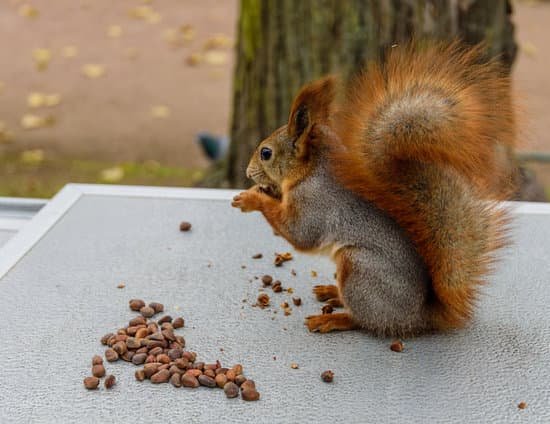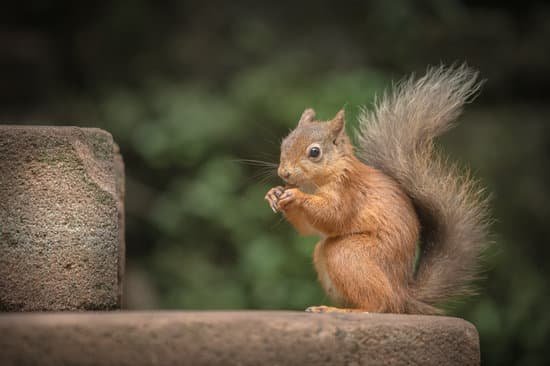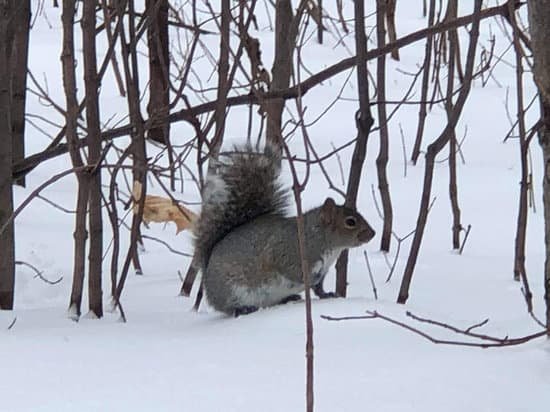Squirrels are very engaging animals. A walk to the park may turn you into a wildlife observer trying to decipher the behavioral oddities of these rodents.
Probably, the first question that would be traversing your mind is: Why Do Squirrels Shake Their Tails? Oooooh! Did I guess right? Definitely Yes.
Tail shaking is a pervasive behavior among squirrels, and most people find it very puzzling to understand the reason behind this peculiar squirrel habit.
Well, not anymore; this article will get you started on everything you need to know on why squirrels shake their tails. Prepare to get informed!
This article has been reviewed by Dr. Linda. Read more about our knowledge control process here.
Contents
Why Do Squirrels Shake Their Tails?
Squirrels have large bushy tails that clearly distinguish them from other rodents. You can quickly identify a squirrel by looking at the tail, which essentially serves as a vital organ for their communication and survival mechanism.
But why exactly do squirrels shake their tails? There are four primary reasons that cause a squirrel to twitch and wag its tail suddenly. They include:
- Venting their exasperation
- Defending their territory
- Sounding the alarm to other squirrels
- Attracting potential mates

Venting Their Exasperation
Squirrels are outspoken beauties, and they often express their anger when irritated. They are certainly not the reserved type of animals! They use their tails to convey their frustration by constantly moving them, which we term as simply shaking.
For instance, exasperation takes over if a squirrel cannot obtain what it wants or there is a hindrance preventing it from securing something, particularly food items, and it begins twitching its tail. Hmmh! The little critters can’t manage their tempers after all.
Usually, they get vexed in instances where a person or a predator is encroaching into their personal space. When this happens, they set their tails into motion to denote alertness and can suddenly flee.
Defending Their Territory
Talk of being overprotective, some squirrel species, such as the Red Squirrels, are very sensitive to their personal space. Thus, to warn other squirrels from invading their territory, they shake their tails to keep at bay territorial visitors.
However, not all squirrels are defensive; grey squirrels, for example, are very accommodating and usually have no problems interacting and feeding with other squirrels.
Sounding The Alarm to Other Squirrels
Squirrels also feature as prospective watchers or keepers of their kind. Consequently, they are always concerned about the safety of their colleagues. They use their tails in conjunction with noise-making as a way of warning of potential danger to fellow squirrels within the vicinity.
When squirrels notice predators such as cats and dogs, they usually twitch their tails while making weird noises.
They do this to get the attention of other squirrels and alarm them of the looming danger. It is also a way of informing the predators that they are aware of their presence.
Attracting Potential Mates
It turns out that male squirrels can also express romance to squirrels of the opposite gender by shaking their tails. During the mating season, male squirrels attract desired females by seductively twitching their tails around them.
When the female squirrels are enticed enough to move closer, perhaps to be a part of the tail dance, the male ones suddenly pounce on them, then a lover’s chase ensues.
Other Benefits of Squirrel Tail That You May Not Have Known
Apart from the primary functions of a squirrel’s tail, which are encompassed around communicating warning messages and surviving, there are numerous other ways squirrels benefit from using their fluffy tail.
However, a squirrel does not need to twitch and shake the tail to convey its effectiveness in these cases. The following are some of the tail movements you should be keen to observe when you see a squirrel.
Keep Balance
Squirrels are very flexible and have outstanding athletic abilities. They are very active during the day, running across the sprawling busy streets and springing from one tree to the other.
Clearly, all these plucky activities call for excellent balance, and squirrels have it, courtesy of their tails.
Squirrels adjust their tails in demanding circumstances, such as when strolling on top of highly placed objects such as rooftops, power lines, and treetops to achieve balance by maintaining their center of gravity.
Steering And Staying Afloat in Water
A swimming squirrel? How fascinating! Yes, I bet squirrels can actually swim better than you. I’m pretty sure you understand how lifesaver balloons work. If not, they operate by providing buoyancy.
Similarly, a squirrel’s tail plays a vital role in ensuring that it stays afloat and steer in water. It basically provides a mechanism by which a squirrel can achieve buoyancy and navigate in the desired direction while in water.

Staying Warm and Keeping Cool
The scorching sun during the summer is usually a nuisance as it gets everything heating up undesirably, including squirrels.
While we humans have creative ways of maneuvering the heatwave, including using umbrellas, squirrels also have something at their disposal – their tails.
Squirrels are inherently designed to cool down by increasing blood flow through their tails after being exposed to unfavorably hot temperatures. This way, they can dump excess heat off their tiny bodies.
What about during the harsh winters? Does a squirrel’s tail keep it warm also? Yes! And just when you thought you were surprised, a squirrel’s tail is very operational in helping them combat the extremely cold weather.
Essentially, the tail acts as a housing unit lined with feathery blankets, which the squirrel can wrap around itself when the conditions become uncomfortable, thus preserving its body heat.

Wrapping Up
Squirrels are naturally charming, and their outlandish behaviors make them even more fascinating.
One of the noticeable behaviors associated with these little critters is tail shaking. It serves as a mechanism of communicating and surviving.
Consequently, there is a myriad of reasons that may get a squirrel’s tail bopping. They include expressing their frustration, defending their personal spaces, appealing to potential mates, and sounding a warning.
A squirrel’s tail is also beneficial in undertaking activities that do not involve tail shaking, such as keeping balance while walking, running, and jumping. Thus, in an instance where a squirrel is wagging its tail, a brief look at the surroundings should tell you the reason behind it.
